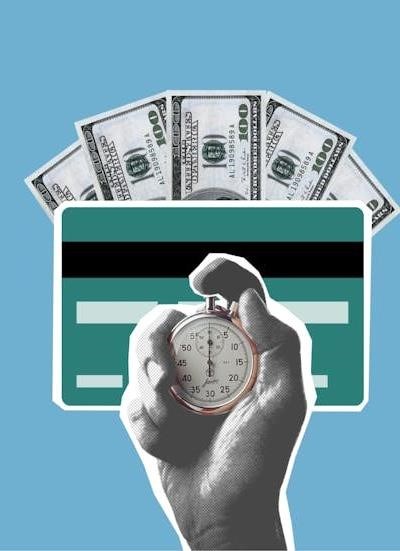
Financial inclusion is vital, yet many with limited income face barriers to credit access. Traditional systems often exclude those with bad credit or no building credit history. Non-VBV cards offer a potential solution, providing an alternative credit option for those navigating financial hardship and seeking credit score improvement.
Understanding the Challenges: Bad Credit & Limited Income
Individuals with bad credit and limited income frequently encounter significant obstacles when attempting to establish or rebuild their creditworthiness. A history of missed payments, defaults, or simply a lack of credit history can lead to denial of traditional credit access, perpetuating a cycle of financial hardship. This situation is often exacerbated by the need for affordable credit options.
The challenges extend beyond simply obtaining a starter credit card. Many are wary of high fees associated with subprime credit products or feel pressured into utilizing prepaid cards that don’t contribute to building credit history. Effective debt management and budgeting become crucial, but are difficult without the tools to demonstrate responsible credit use. The lack of access hinders credit repair efforts and limits approval odds for loans, housing, and even employment.
Furthermore, navigating complex financial systems can be daunting, particularly for those unfamiliar with concepts like credit score improvement and the importance of maintaining a positive credit building trajectory. This creates a critical need for accessible and supportive financial resources and products designed for genuine financial inclusion.
Secured Credit Cards: A Starter Option
Secured credit cards represent a valuable entry point for individuals with bad credit or those new to credit building. Unlike traditional starter credit card options, secured cards require a cash deposit that typically serves as the credit limit. This deposit mitigates risk for the issuer, significantly increasing approval odds for applicants who might otherwise be denied.
The primary benefit lies in the opportunity to demonstrate responsible credit use. By making timely payments and keeping the balance low, users can actively work towards credit score improvement and establish a positive building credit history. Many issuers report to all three major credit bureaus, ensuring that positive activity contributes to overall creditworthiness.
While low fees are ideal, it’s crucial to compare options. Some secured cards have annual fees or other charges. Look for cards offered by credit unions or community banks, as they often have more favorable terms and a commitment to financial inclusion. Remember that even small credit limits can be effective when managed responsibly, paving the way for credit access to more substantial financial products and aiding in debt management during times of financial hardship.
Navigating Fees & Finding Affordable Credit
When seeking affordable credit, especially with limited income, understanding the fee structure is paramount. Beyond annual fees, scrutinize potential charges like application fees, late payment fees, and foreign transaction fees. High fees can negate the benefits of credit building and exacerbate financial hardship. Prioritize cards with transparent and low fees.
Prepaid cards, while not credit cards, are often marketed as alternatives, but they don’t contribute to building credit history. Focus on options specifically designed for subprime credit or starter credit card users. Explore offerings from credit unions and community banks, which frequently prioritize financial inclusion and offer more competitive rates.
Consider the APR (Annual Percentage Rate). While initial focus is on approval, a lower APR will save money on interest charges if a balance is carried. Look for cards with grace periods to avoid interest altogether. Effective budgeting and debt management skills are essential alongside finding credit access that doesn’t create further financial strain. Some issuers offer hardship programs to assist during challenging times, aiding in credit score improvement and maintaining creditworthiness.
Beyond Secured Cards: Alternative Paths to Credit Repair
While secured credit cards are excellent for credit building, especially with bad credit, they aren’t the only route to credit repair. Credit builder loans, offered by some credit unions and community banks, provide a structured way to demonstrate responsible credit use and establish a positive credit history. These loans work in reverse – you make payments to yourself, and the lender reports your payments to credit bureaus.
Another option is becoming an authorized user on a responsible cardholder’s account. This allows you to benefit from their positive creditworthiness, but relies on their diligent debt management. Carefully research any alternative credit programs; some may have hidden fees or predatory terms. Avoid companies promising quick fixes or no credit check solutions, as these are often scams.
Focus on consistent, on-time payments for all bills, not just credit accounts. Rent and utility payments can sometimes be reported to credit bureaus through third-party services, further aiding credit score improvement. Remember, financial inclusion requires proactive steps and a commitment to responsible credit use, even with small credit limits and limited income.
Maximizing Approval Odds & Long-Term Credit Health
Boosting your approval odds for any credit product, even starter credit card options, requires preparation. Check your credit report for errors and dispute any inaccuracies. Demonstrating stable income, even from limited income sources, strengthens your application. Consider applying with a co-signer if possible, leveraging their creditworthiness.
Once approved, prioritize responsible credit use. Keep your credit utilization ratio (the amount of credit used versus your total credit limit) low – ideally below 30%. Pay your bills on time, every time, to consistently improve your credit score improvement. Avoid maxing out your small credit limits, as this negatively impacts your score.
Budgeting is crucial for successful debt management. Understand your spending habits and create a realistic plan to avoid overspending. Explore hardship programs offered by lenders if you face unexpected financial hardship. Building a strong building credit history is a marathon, not a sprint; consistent effort yields long-term financial inclusion and access to more affordable credit.




A well-written and concise explanation of a complex problem. I found the section on secured credit cards helpful – a practical solution that
This article really hits the nail on the head! It